hong kong style french toast isn’t just food—it’s an experience. Imagine sinking your teeth into a crispy, golden crust hiding a molten, creamy center, with sweet syrup cascading down the sides. This isn’t your average breakfast toast. It’s a beloved creation from the heart of Hong Kong’s bustling Cha Chaan Teng cafés, where East meets West in every bite.
I first discovered it during a late afternoon wander through Mong Kok, chasing the scent of something familiar yet distinct. The humble stack of bread, deep-fried to perfection and stuffed with smooth peanut butter, changed my expectations of comfort food forever.
In this guide, we’ll explore the roots and rise of hong kong style french toast, how it’s different from traditional versions, how to make it without pork or alcohol, and why it remains one of Hong Kong’s most iconic culinary treasures.
Introduction to Hong Kong Style French Toast
What Is Hong Kong-Style French Toast?
At its core, hong kong style french toast is a decadent treat made by stacking slices of bread—often with a sweet filling like peanut butter or kaya jam—dipping them in egg, and deep-frying until crispy. It’s typically served with a slab of butter on top and drenched in golden syrup. The result? Crispy on the outside, gooey on the inside, and unapologetically indulgent.
Unlike Western French toast, which tends to be pan-fried and subtly sweet, the Hong Kong version leans into excess, designed to satisfy the local craving for bold textures and flavors. It’s more dessert than breakfast—and all about that crunch-meets-cream contrast.
Why It’s a Beloved Staple in Hong Kong Cafés
This toast has deep roots in Hong Kong’s post-war diner culture, where East-West fusion cuisine flourished. Cha Chaan Tengs, or local tea restaurants, became popular by blending British café fare with Cantonese flavors and affordability. Hong Kong-style French toast emerged as the ultimate mid-afternoon snack, offering comfort, calories, and a touch of nostalgia.
You’ll find it everywhere—from humble roadside diners to Instagram-famous dessert spots. Its enduring popularity lies in its simplicity and sensory overload: a hot, crunchy exterior encasing a warm, rich filling. Looking for inspiration?
Looking for more sweet treats? Discover our delightful Strawberry Angel Food Cake.
Table of Contents
The Origins and Cultural Story Behind Hong Kong Style French Toast
A Colonial Influence with a Local Twist
To understand hong kong style french toast, you need to know a bit about Hong Kong’s culinary history. During the British colonial period, Western-style dishes like French toast, milk tea, and baked goods began appearing on local menus. But the locals didn’t just copy these recipes—they reinvented them.
hong kong style french toast, originally a simple European breakfast concept, transformed into a decadent delight. Cooks swapped brioche for soft white bread, added rich fillings like peanut butter or coconut jam, and deep-fried it instead of pan-frying. The result? A more indulgent version designed to satisfy Hong Kong’s fast-paced, flavor-loving culture.
This toast shines because of its unique blend of colonial influence and local innovation. What started as a borrowed concept became an icon of East-meets-West culinary identity. Don’t miss our breakdown of classic fusion foods in Asia.
Evolution Through the Hong Kong Cha Chaan Teng Culture
You can’t talk about hong kong style french toast without mentioning Cha Chaan Tengs—the bustling, nostalgic tea restaurants that became a post-war staple for working-class families. These eateries offered fast, affordable comfort food with a mix of British and Cantonese flavors. And hong kong style french toast quickly became a star, thanks to its satisfying texture, quick preparation, and crowd-pleasing flavor.
But it’s more than just a dish—it’s a symbol of Hong Kong’s resilience and adaptability. In a city that never stops moving, hong kong style french toast offers a moment of nostalgic pause. It’s the flavor of a childhood afternoon, the warmth of a neighborhood café, and the comfort of something familiar yet exciting.
Even today, hong kong style french toast remains a must-try for locals and tourists alike. Cafés now offer modern versions with ice cream, matcha, or even salted egg yolk. But the original? Timeless. Check out modern twists on HK street food to see how tradition meets trend.
Explore other creamy indulgences like our Mini Basque Cheesecake.
Key Ingredients and Substitutes
Classic Components: Bread, Fillings, and Toppings
At first glance, hong kong style french toast may seem simple, but its rich layers come from a few carefully chosen ingredients. Here’s what typically goes into this indulgent creation:
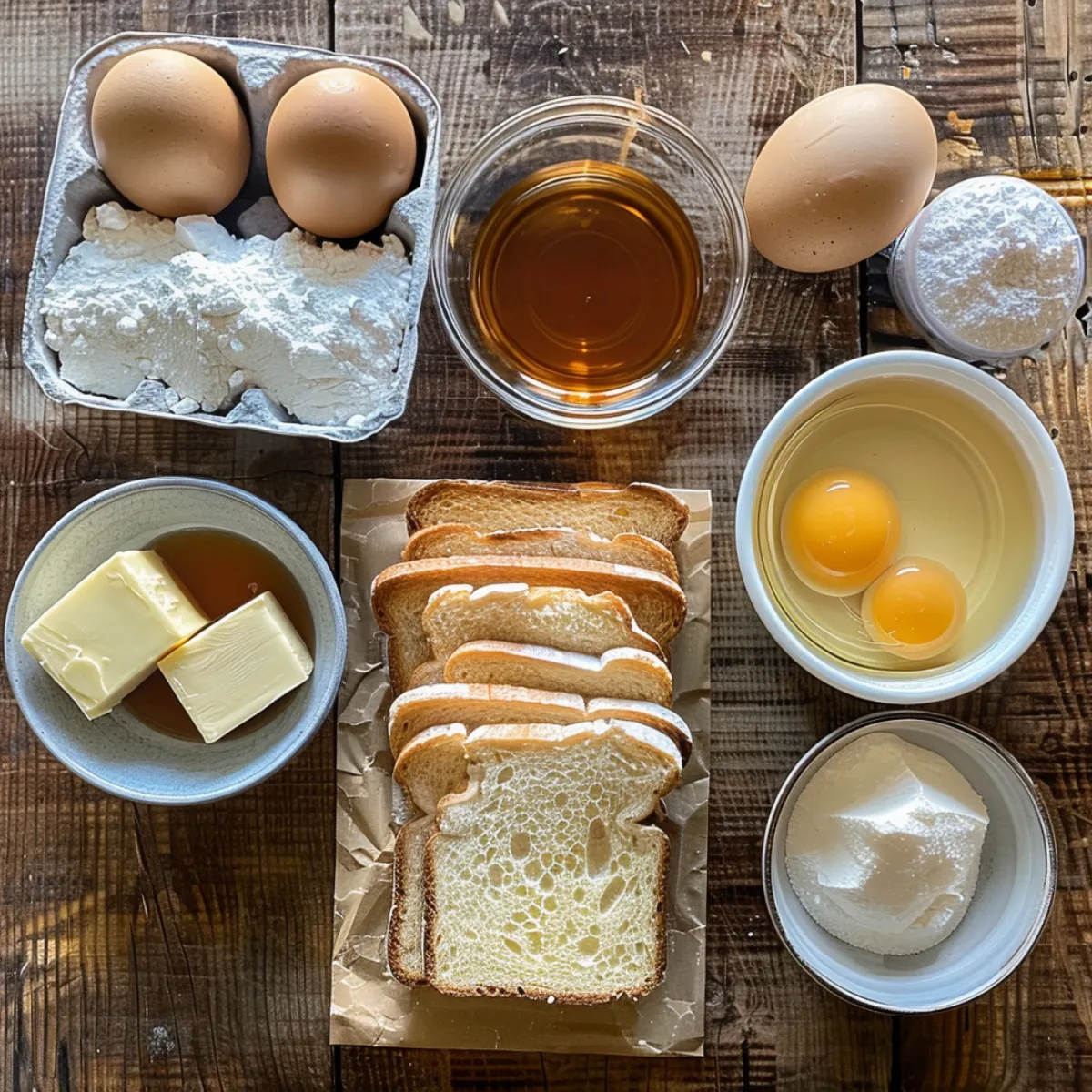
- Bread: Thick-cut white sandwich bread is the gold standard. It’s soft, airy, and perfect for soaking up the egg mixture. Some shops even use milk bread for extra richness.
- Filling: The most iconic version uses creamy peanut butter, though kaya jam (a sweet coconut-egg spread) or chocolate spread are also popular.
- Egg mixture: Beaten eggs coat the bread before frying. Some recipes add evaporated milk or sugar to the mix for a slightly sweet crust.
- Frying oil: A neutral oil like canola or sunflower is used to deep-fry the sandwich to golden perfection.
- Toppings: A thick pat of butter (or plant-based alternative) is placed on top just before serving, with golden syrup drizzled generously over the toast.
If you’re eating out, always check if any unexpected fillings (like ham) are used—but when you make it at home, you’re in full control.
Substituting Alcohol and Pork-Based Ingredients Properly
Here’s where it gets important. Some Westernized or fusion versions of French toast use rum-based syrups or fillings that might not align with halal preferences. Here’s how I ensure every bite of hong-kong-style-french-toast stays flavorful and fully acceptable:
- Avoiding alcohol-based syrups or extracts: Instead of rum-flavored syrup or liqueur-infused cream, opt for maple syrup, honey, or a homemade vanilla-infused sugar syrup.
- No pork-based additions: While some recipes call for ham or bacon fillings in fusion versions, I always swap those with creamy cheese, banana slices, or a thick layer of nut butter. These deliver richness and balance without compromising your values or the recipe.
- Dairy alternatives: Want it dairy-free? Use plant-based milk in your egg dip and swap out the butter with coconut oil or vegan margarine for a delicious twist.
What matters most is honoring the texture, richness, and golden crispiness that defines this dish. And guess what? It’s 100% possible without pork or alcohol.
For another decadent twist, try our rich Chocolate Tiramisu.
How to Make Authentic Hong Kong Style French Toast at Home
Step-by-Step Preparation and Cooking Tips
Making hong kong style french toast at home is easier than you might think. With a few pantry staples and a hot pan, you’re just minutes away from a crispy, golden delight that tastes just like it came from a Cha Chaan Teng in Kowloon.
Here’s my go-to method, tested and perfected:
Ingredients (Serves 2):
- 4 slices of thick white bread
- 2 tablespoons peanut butter (or kaya, chocolate spread)
- 2 large eggs
- 2 tablespoons evaporated milk (or oat milk for dairy-free)
- 1 tablespoon sugar (optional, for a sweeter egg batter)
- 2 tablespoons butter or coconut oil (for topping)
- Golden syrup or honey (for serving)
- Frying oil (neutral, like canola or sunflower)
Instructions:
- Assemble the sandwich: Spread peanut butter on one slice of bread, top with another. Press gently. Repeat for the second sandwich.
- Trim the edges (optional): For a clean look and better frying, remove the crusts.
- Prepare the batter: Beat eggs with evaporated milk and sugar (if using) in a wide bowl.
- Dip the sandwich: Coat each side of the sandwich thoroughly in the egg batter. Let it sit for 10–15 seconds on each side.
- Heat the oil: In a frying pan, heat about ½ inch of oil over medium heat until shimmering.
- Fry the toast: Carefully place the sandwich in the oil. Fry 1–2 minutes per side until golden brown. Don’t rush—crispy edges and a soft center are key to authentic hong kong style french toast.
- Drain excess oil: Remove the toast and place it on paper towels to absorb any excess oil.
- Top it off: Add a dollop of butter or coconut oil on top and drizzle with golden syrup or honey.
Done! What you get is a crispy exterior with a warm, gooey interior—pure comfort food perfection.
Quick Visual Guide:
| Step | Time |
|---|---|
| Assemble | 2 minutes |
| Batter Soak | 1 minute |
| Frying | 4 minutes |
| Serving | Instant joy |
Common Mistakes and How to Avoid Them
Even with a simple dish like hong kong style french toast, a few common mistakes can ruin the experience. Here’s how to avoid them:
- Using thin bread: Thin slices won’t hold together. Choose thick, soft sandwich bread for authentic hong kong style french toast.
- Skipping the filling: This toast is all about that gooey center. Peanut butter or kaya makes it truly authentic.
- Overheating the oil: Too hot, and the toast burns before the center warms. Keep your oil at medium heat.
- Undercooking the center: Ensure your toast is warm and melty inside. Press gently with a spatula while frying.
Learning to make hong kong style french toast taught me patience—and once you master it, your toast game will never be the same.
Variations of Hong Kong French Toast You’ll Love
Peanut Butter, Kaya, and Other Popular Fillings
While the classic hong kong style french toast is packed with peanut butter and drenched in syrup, the beauty of this dish lies in its versatility. Over the years, chefs, cafés, and curious home cooks like me have experimented with fillings and toppings to elevate the experience without losing the original charm.
Here are some beloved twists:
- Peanut Butter: The OG. Creamy or crunchy—either works. It gives the toast that gooey, nutty middle.
- Kaya (Coconut Jam): A Southeast Asian favorite, kaya adds a sweet, custardy flavor. Try it with a slice of cold butter inside before frying for an extra indulgent bite.
- Condensed Milk: Drizzled inside or on top for an ultra-sweet finish. Pairs beautifully with black milk tea.
- Chocolate Spread: For dessert lovers, Nutella or dark chocolate spread brings a rich twist to the traditional toast.
- Red Bean Paste: A nod to traditional Asian desserts, red bean adds sweetness and texture.
- Banana Slices: Sliced thin inside the sandwich adds both moisture and natural sweetness—especially when paired with peanut butter.
Each variation transforms the dish without taking away from its soul: crispy, creamy, and comforting.
Vegan, Gluten-Free, and Modern Takes on the Classic
Want to enjoy hong kong style french toast with dietary preferences in mind? I’ve experimented with a few plant-based and gluten-free versions that keep the joy alive, minus the restrictions.
Vegan Version:
- Egg substitute: Use a mix of oat milk, cornstarch, and a pinch of turmeric for color. Or go with a store-bought egg replacer.
- Bread: Choose soft vegan sandwich bread with good structure.
- Butter & Syrup: Swap dairy butter with coconut oil or vegan margarine. Stick to maple syrup or agave.
Gluten-Free Version:
- Use thick-cut gluten-free sandwich bread (white or whole grain).
- Everything else remains the same, just watch for gluten in fillings and toppings like kaya or chocolate spread.
Fusion & Instagram-Worthy Variants:
- Matcha or Black Sesame Toppings: Add powdered matcha or sesame drizzle over the toast.
- Salted Egg Yolk Custard Filling: A modern Hong Kong dessert trend that gives a savory kick.
- Taro Cream: Subtly sweet and beautiful in color—ideal for social media snaps.
Whether you’re health-conscious, vegan, or just looking to try something new, these versions keep the essence of hong kong style french toast alive.
Hong Kong Style French Toast vs. Traditional French Toast
Key Differences in Taste, Texture, and Preparation
While both versions share a foundation—bread dipped in eggs and cooked—the similarities between hong kong style french toast and traditional French toast mostly end there. Let me walk you through the defining differences I’ve discovered through taste tests and trial runs across continents.
| Feature | Hong Kong-Style French Toast | Traditional French Toast |
|---|---|---|
| Cooking Method | Deep-fried in oil | Pan-fried in butter or oil |
| Filling | Usually stuffed (e.g., peanut butter) | Rarely filled |
| Toppings | Golden syrup, butter | Powdered sugar, fruit, maple syrup |
| Texture | Crunchy outside, gooey inside | Soft and eggy throughout |
| Occasion | Snack or dessert | Breakfast or brunch |
| Origin Influence | British colonial + Cantonese fusion | European (French or American roots) |
Whereas traditional French toast is often airy, mildly sweet, and soft throughout, hong kong style french toast is bold, indulgent, and texturally complex. It’s all about the contrast between crispy edges and a melty, creamy center—thanks to that glorious deep-fry.
From my experience, hong kong style french toast delivers more drama in every bite. It’s unapologetically rich, and if you serve it at brunch? Prepare for a table full of wide eyes and empty plates.
Why Hong Kong’s Version Stands Out
So, why does hong kong style french toast steal the spotlight in so many Asian food guides?
- It’s bold: Deep-frying bread soaked in eggs and loaded with sweet fillings is not subtle—but it’s unforgettable.
- It tells a story: Each bite reflects Hong Kong’s colonial history, its inventive café culture, and its love for comfort food with flair.
- It’s adaptable: From traditional peanut butter to modern matcha, hong kong style french toast can evolve without losing its character.
I’ll never forget the first time I tried hong kong style french toast at a Cha Chaan Teng in Sham Shui Po. The crispness gave way to a molten center, and I instantly understood why it’s more than just a breakfast dish—it’s a culinary statement.
Where to Try the Best Hong Kong Style French Toast
Must-Visit Cafés in Hong Kong and Abroad
There’s no better place to experience hong kong style french toast than in its birthplace: the Cha Chaan Tengs of Hong Kong. These fast-paced tea restaurants serve up nostalgia by the plateful, with thick toast fried to perfection and paired with milky tea.
Top Spots in Hong Kong:
- Australia Dairy Company (Jordan)
Famous for its breakfast sets, but their toast—crisp, golden, and gooey—is the real hero. - Kam Wah Café (Mong Kok)
Known for its pineapple buns, but their peanut butter French toast is a local favorite. - Mido Café (Yau Ma Tei)
Vintage vibes and an old-school menu. Their kaya-stuffed toast is worth the visit alone.
Global Destinations Serving Authentic Versions:
- Cha Kee (New York City, USA)
A trendy take on the Cha Chaan Teng, offering HK-style milk tea and toast with a modern edge. - Happy Lemon Café (Toronto, Canada)
Their toast is thick, well-fried, and often comes with flavored drizzles like matcha or chocolate. - T4 (London, UK)
While known for drinks, their side menu includes a solid take on Hong Kong-style toast.
Whether you’re in Sham Shui Po or San Francisco, the best versions keep it crispy outside, molten inside, and drenched in that sweet, syrupy goodness.
Street Food Spots vs. Trendy Dessert Shops
Street Food Style:
In Hong Kong, it’s not unusual to find hong kong style french toast as part of a bustling food stall menu. It’s quick, hot, and served wrapped in paper. These versions are often more rustic—thicker oil, stronger crunch—but deeply satisfying.
Trendy Dessert Shops:
On the flip side, modern dessert cafés have elevated the toast into an art form. Think matcha-dusted towers, gold leaf toppings, or ice cream on the side. These places cater to Instagram, but many still honor the flavor fundamentals.
Best of Both Worlds:
My advice? Try both. The street version shows you where it started; the café version shows where it’s going. Either way, you’re in for a serious flavor ride.
Serving and Pairing Ideas for Hong Kong French Toast
Best Drinks and Sides to Complement the Toast
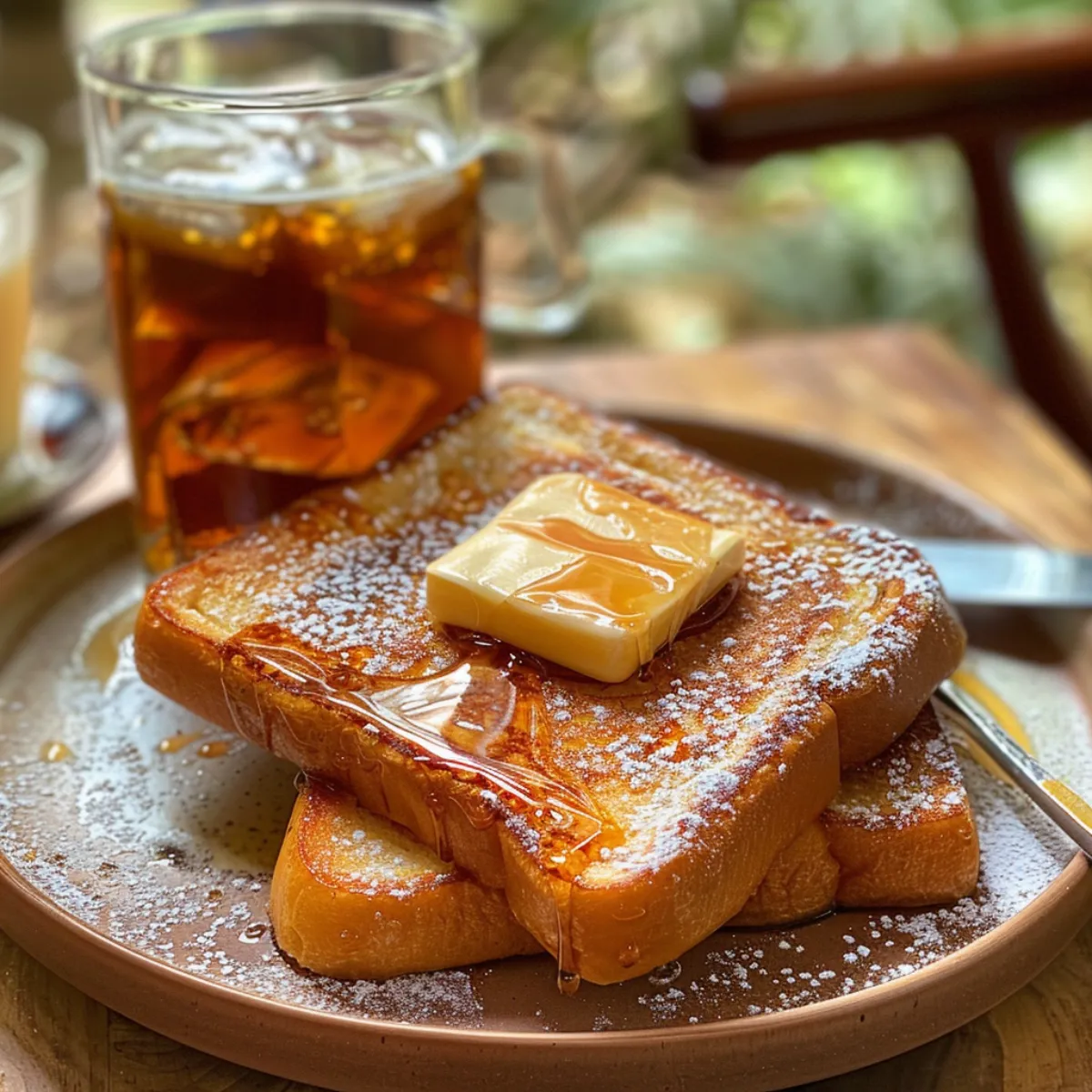
The richness of hong kong style french toast begs for the right pairing. You want something that balances its deep-fried indulgence, complements the sweetness, and enhances the nostalgic café experience. Here’s what I’ve found works best after many tasty trials:
Classic Pairings:
- Hong Kong Milk Tea (奶茶): Bitter, strong Ceylon black tea mellowed by evaporated milk—it’s bold enough to stand up to the toast’s richness. Looking for inspiration?
- Yuan Yang (鸳鸯): A 50/50 mix of coffee and milk tea. Its bittersweet blend makes it a favorite with toast.
- Iced Lemon Tea: Crisp and refreshing, especially when your toast is steaming hot and dripping with syrup.
Creative Modern Pairings:
- Matcha Latte: The grassy, bitter notes cut through the sweetness beautifully.
- Salted Plum Soda: Tangy and fizzy—perfect for refreshing your palate between bites.
- Kumquat Honey Tea: Fragrant and tart with a sweet finish.
Savory Sides:
Since the toast is ultra-sweet, some cafés serve it alongside:
- Soft scrambled eggs
- Crispy hash browns
- Sautéed mushrooms
These add texture, umami, and depth to balance your plate.
Presentation and Garnishing Tips for Instagram-Worthy Plates
Let’s be real— hong kong style french toast is already a visual stunner. But with a few tweaks, you can turn this humble café snack into a social media superstar.
Tips I swear by:
- Clean edges: Trim the crusts neatly before frying. It gives a polished, uniform look.
- Symmetry: Slice diagonally after frying and stack slightly offset to show the filling.
- Garnish intentionally: Add a small pat of butter on top, drizzle golden syrup in a zigzag or spiral, then dust with powdered sugar or cinnamon.
- Color contrast: Serve with a dark drink (like milk tea) in a white cup to pop the golden toast in photos.
- Add a fruit accent: A couple of fresh strawberries or banana slices at the edge of the plate not only enhance flavor but brighten the look.
Here’s a quick plating breakdown:
| Element | Why It Works |
|---|---|
| Diagonal slice | Reveals the gooey center |
| Golden syrup drip | Adds shine and movement |
| Small fruit side | Balances color and sweetness |
| Clean plate | Keeps focus on the toast |
Whether it’s for brunch with friends or your foodie Instagram reel, presentation matters. And honestly? This toast was made to shine.
FAQs About Hong Kong Style French Toast
What is the difference between French toast and Hong Kong-style French toast?
The biggest difference lies in preparation and indulgence. Traditional French toast is usually pan-fried, lightly sweetened, and served with fruit or powdered sugar. hong kong style french toast, on the other hand, is deep-fried until crispy, often stuffed with peanut butter, and topped with butter and golden syrup. It’s richer, crunchier, and intended more as a dessert or snack than a breakfast staple.
This Hong Kong version comes from a culture that loves strong textures and bold flavors—so it’s more of an experience than a side dish.
What is inside Hong Kong French toast?
Traditionally, hong kong style french toast is filled with creamy peanut butter, giving it a gooey center once fried. However, variations include kaya jam, chocolate spread, or condensed milk. Some cafés get creative with fillings like banana, taro cream, or even salted egg yolk custard.
The bread is thick-sliced and pressed together like a sandwich before being dipped in an egg mixture and deep-fried to perfection.
What is the history of Hong Kong-style French toast?
This dish dates back to post-war Hong Kong, where Western influence met local ingenuity in the Cha Chaan Teng (茶餐廳) scene. Inspired by European-style French toast, Hong Kong chefs reimagined it by deep-frying instead of pan-frying, and stuffing it with affordable, high-calorie fillings to satisfy a hardworking population.
It became a beloved snack across generations—symbolizing fusion cuisine and affordable luxury.
What is Hong Kong-style French toast Wiki?
If you look up hong kong style french toast on Wikipedia, you’ll find a summary highlighting its origin, traditional ingredients, and its role in Hong Kong café culture. The entry emphasizes the deep-fried method, its popularity in Cha Chaan Tengs, and the usual peanut butter filling and golden syrup topping.
But what it can’t capture is the emotion—the feeling of biting into hot, crispy toast and tasting Hong Kong’s unique flavor legacy.
Conclusion
hong kong style french toast is more than just a dish—it’s a taste of culture, memory, and innovation. From its roots in colonial cafés to modern Instagram-worthy dessert shops, this golden, gooey toast has earned its place as one of Hong Kong’s most iconic treats. Whether you’re biting into the crispy edge at a street stall in Kowloon or recreating it at home with dairy-free butter and kaya jam, each version tells a story.
For me, making this toast became more than a kitchen experiment—it became a journey into a city’s heart. Every crackle of the crust, every melt of the syrup-soaked center, brings me back to the warmth and wonder of Hong Kong’s food scene.
So the next time you’re craving something bold, comforting, and irresistibly sweet, try this deep-fried masterpiece. And trust me—once you’ve had hong kong style french toast, regular toast just won’t cut it anymore.
Ready for more treats? Check out our velvety Nama Chocolate.
Want more delicious Asian recipes? Follow us on Facebook and explore our full collection on Pinterest.
Print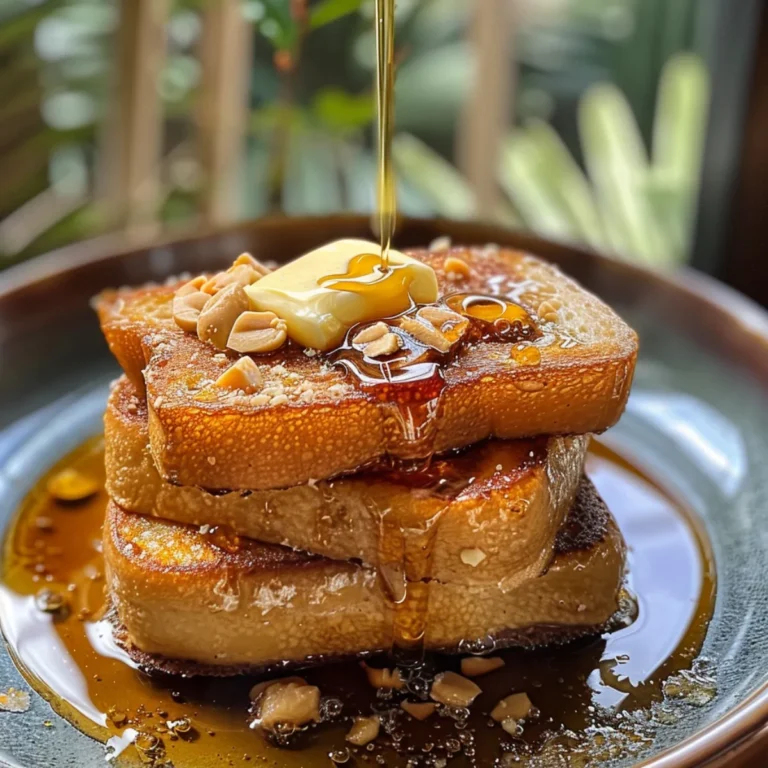
The Ultimate Guide to Hong Kong-Style French Toast: A Crispy, Creamy Delight
Crispy, golden, and creamy Hong Kong-Style French Toast—an iconic treat from the bustling Cha Chaan Teng cafés, perfect for breakfast or a sweet snack.
- Total Time: 10 minutes
- Yield: 2 servings 1x
Ingredients
- 4 slices of thick white bread
- 2 tablespoons peanut butter (or kaya, chocolate spread)
- 2 large eggs
- 2 tablespoons evaporated milk (or oat milk for dairy-free)
- 1 tablespoon sugar (optional)
- 2 tablespoons butter or coconut oil (for topping)
- Golden syrup or honey (for serving)
- Frying oil (neutral, like canola or sunflower)
Instructions
- Spread peanut butter on one slice of bread, top with another. Repeat with the second sandwich.
- Trim edges if desired.
- Beat eggs with evaporated milk and sugar in a wide bowl.
- Dip each sandwich in the egg batter, soaking for 10-15 seconds per side.
- Heat oil in a pan over medium heat.
- Fry each sandwich for 1-2 minutes per side until golden brown.
- Drain on paper towels.
- Top with butter and drizzle with golden syrup or honey before serving.

Notes
For best results, use thick, soft bread and ensure the filling is spread evenly.
- Prep Time: 5 minutes
- Cook Time: 5 minutes
- Category: Breakfast, Snack
- Method: Pan-Fried
- Cuisine: Hong Kong, Asian
Nutrition
- Serving Size: 1 sandwich
- Calories: 350
- Sugar: 12g
- Sodium: 320mg
- Fat: 22g
- Saturated Fat: 8g
- Unsaturated Fat: 12g
- Trans Fat: 0g
- Carbohydrates: 28g
- Fiber: 2g
- Protein: 8g
- Cholesterol: 120mg

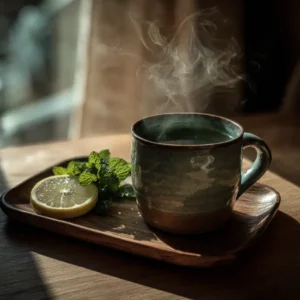
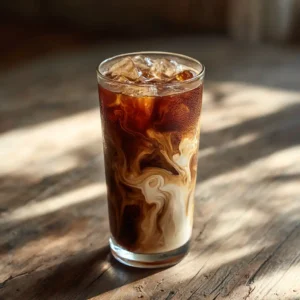





1 thought on “The Ultimate Guide to Hong Kong-Style French Toast: A Crispy, Creamy Delight”